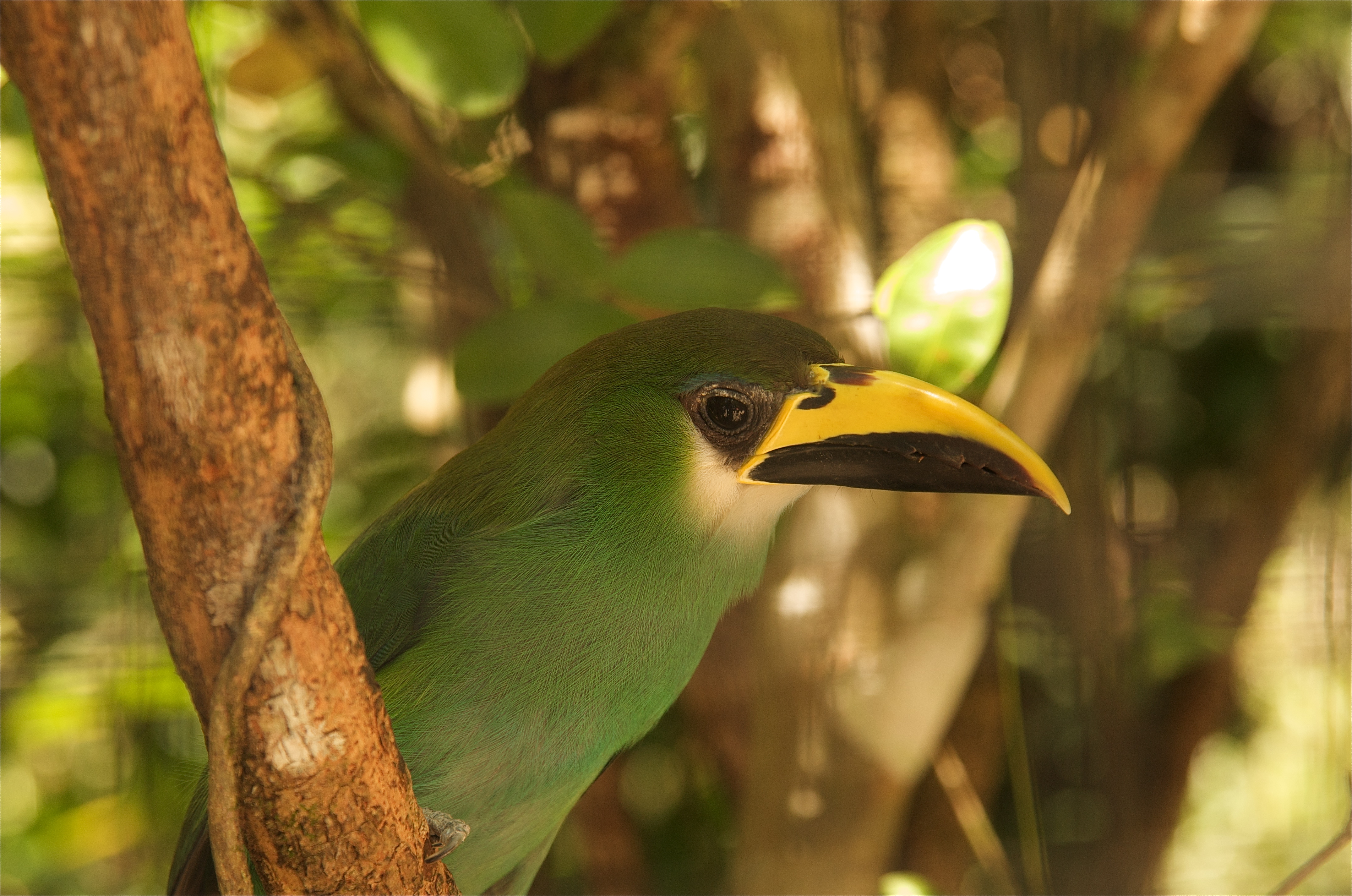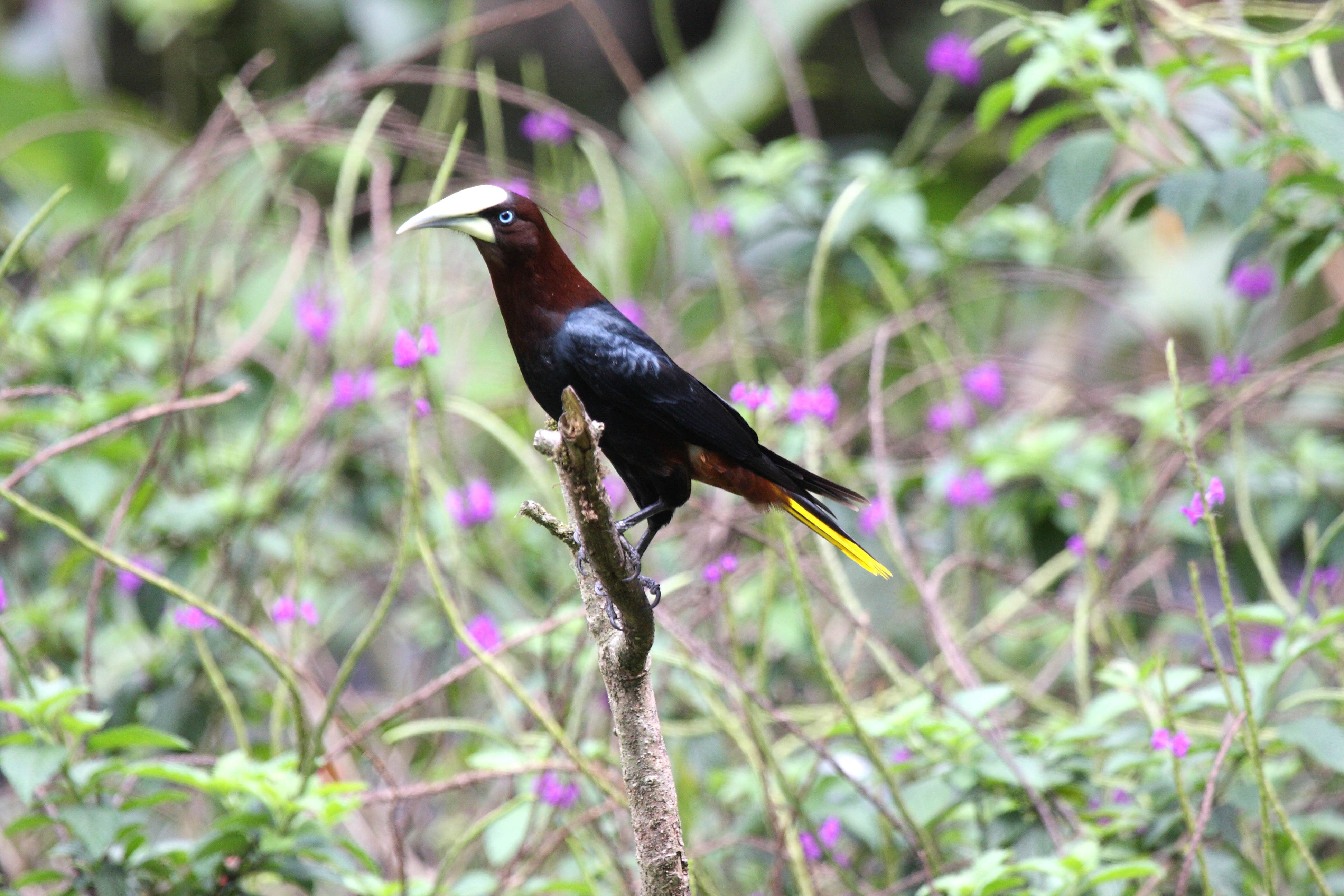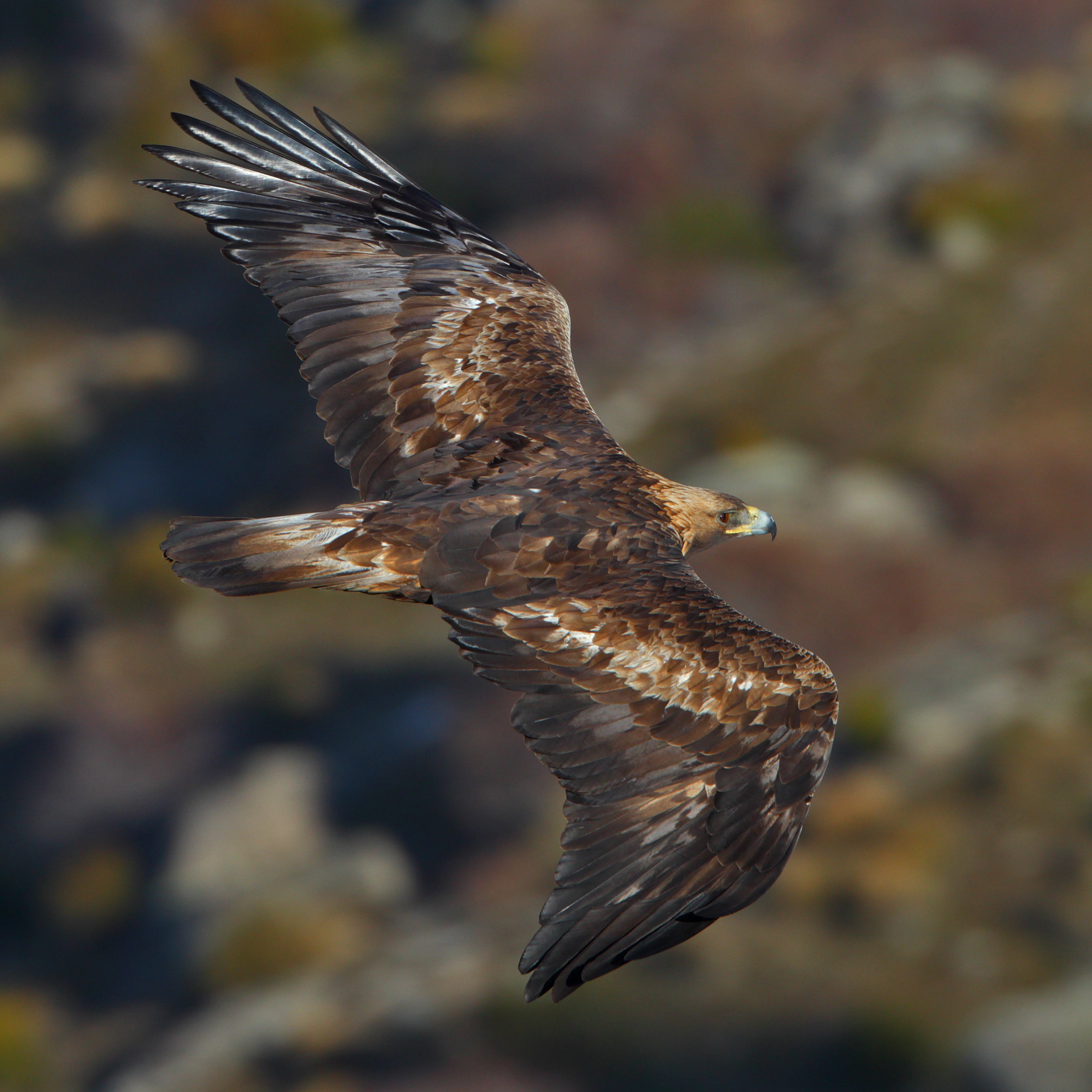|
Miraflor Natural Reserve
Miraflor Natural Reserve is a nature reserve in Nicaragua. It is one of the 78 reserves that are under official protection in the country. It was declared a nature reserve in 1990. It is located from Estelí, Nicaragua, and spans an area of . It is a place where farmers grow coffee, one of the region's most valuable ecological products. The reserve is known for its bio-diversity. It is considered one of the richest orchids zones in the world. There are more than 200 identified species of orchids, including Catteleya Skinniri (the national flower of Costa Rica). The orchids grow in different ways, but the most common growth is on the trees. There are also many colorful and unique orchid species growing among the rocks and directly on the ground level. There are 236 species of birds, among which one can observe quetzal, emerald toucanet, three-wattled bellbird The three-wattled bellbird (''Procnias tricarunculatus'') is a Central American Bird migration, migratory bird of th ... [...More Info...] [...Related Items...] OR: [Wikipedia] [Google] [Baidu] |
Nicaragua
Nicaragua (; ), officially the Republic of Nicaragua (), is the largest country in Central America, bordered by Honduras to the north, the Caribbean to the east, Costa Rica to the south, and the Pacific Ocean to the west. Managua is the country's capital and largest city. , it was estimated to be the second largest city in Central America. Nicaragua's multiethnic population of six million includes people of mestizo, indigenous, European and African heritage. The main language is Spanish. Indigenous tribes on the Mosquito Coast speak their own languages and English. Originally inhabited by various indigenous cultures since ancient times, the region was conquered by the Spanish Empire in the 16th century. Nicaragua gained independence from Spain in 1821. The Mosquito Coast followed a different historical path, being colonized by the English in the 17th century and later coming under British rule. It became an autonomous territory of Nicaragua in 1860 and its northernmost part ... [...More Info...] [...Related Items...] OR: [Wikipedia] [Google] [Baidu] |
Estelí Department
Estelí () is a department of Nicaragua. It covers an area of 2,230 km2 and has a population of 230,953 (2021 estimate). Its capital is the city of Estelí. Municipalities # Condega # Estelí # La Trinidad # Pueblo Nuevo # San Juan de Limay San Juan de Limay is a municipality in the Estelí department of Nicaragua. It is famous for its artisan production of soapstone (marmolina) sculptures. San Juan de Limay is located 195 km north of Managua in the north of Nicaragua only a s ... # San Nicolás References External links Mapa del Departamento de EstelíPortal del Norte de NicaraguaPortal de Estelí Nicaragua Departments of Nicaragua {{Nicaragua-geo-stub ... [...More Info...] [...Related Items...] OR: [Wikipedia] [Google] [Baidu] |
Estelí
Estelí (), officially Villa de San Antonio de Pavia de Estelí is a city and municipality within the Estelí department. It is the 3rd largest city in Nicaragua due to the high urbanization of its municipality, at 83%, with an urban population of 120,014 (2017 estimate). It is also the 8th largest municipality, and is an active commercial center in the north, known as "the Diamond of the Segovia" (this name being created by Oscar Corea Molina in his radio show "Trampolin 43”) and the de facto capital of the north. Located on the Pan-American Highway, 150 km north of Managua, Estelí is a fast-growing and progressive city. It enjoys a pleasant climate throughout most of the year due to its location in the north central highlands at a mean elevation of 844 m (2769 ft) above sea level. The city is also surrounded by forested mountains of pines, oaks, and walnuts, and plateaus that go up to 1600 m above sea level, some of which are protected as natural reserves. H ... [...More Info...] [...Related Items...] OR: [Wikipedia] [Google] [Baidu] |
Nature Reserve
A nature reserve (also known as a wildlife refuge, wildlife sanctuary, biosphere reserve or bioreserve, natural or nature preserve, or nature conservation area) is a protected area of importance for flora, fauna, or features of geological or other special interest, which is reserved and managed for purposes of conservation and to provide special opportunities for study or research. They may be designated by government institutions in some countries, or by private landowners, such as charities and research institutions. Nature reserves fall into different IUCN categories depending on the level of protection afforded by local laws. Normally it is more strictly protected than a nature park. Various jurisdictions may use other terminology, such as ecological protection area or private protected area in legislation and in official titles of the reserves. History Cultural practices that roughly equate to the establishment and maintenance of reserved areas for animals date bac ... [...More Info...] [...Related Items...] OR: [Wikipedia] [Google] [Baidu] |
Biodiversity
Biodiversity or biological diversity is the variety and variability of life on Earth. Biodiversity is a measure of variation at the genetic (''genetic variability''), species (''species diversity''), and ecosystem (''ecosystem diversity'') level. Biodiversity is not distributed evenly on Earth; it is usually greater in the tropics as a result of the warm climate and high primary productivity in the region near the equator. Tropical forest ecosystems cover less than 10% of earth's surface and contain about 90% of the world's species. Marine biodiversity is usually higher along coasts in the Western Pacific, where sea surface temperature is highest, and in the mid-latitudinal band in all oceans. There are latitudinal gradients in species diversity. Biodiversity generally tends to cluster in hotspots, and has been increasing through time, but will be likely to slow in the future as a primary result of deforestation. It encompasses the evolutionary, ecological, and cultural ... [...More Info...] [...Related Items...] OR: [Wikipedia] [Google] [Baidu] |
Costa Rica
Costa Rica (, ; ; literally "Rich Coast"), officially the Republic of Costa Rica ( es, República de Costa Rica), is a country in the Central American region of North America, bordered by Nicaragua to the north, the Caribbean Sea to the northeast, Panama to the southeast, the Pacific Ocean to the southwest, and Maritime boundary, maritime border with Ecuador to the south of Cocos Island. It has a population of around five million in a land area of . An estimated 333,980 people live in the capital and largest city, San José, Costa Rica, San José, with around two million people in the surrounding metropolitan area. The sovereign state is a Unitary state, unitary Presidential system, presidential Constitution of Costa Rica, constitutional republic. It has a long-standing and stable democracy and a highly educated workforce. The country spends roughly 6.9% of its budget (2016) on education, compared to a global average of 4.4%. Its economy, once heavily dependent on agricultu ... [...More Info...] [...Related Items...] OR: [Wikipedia] [Google] [Baidu] |
Quetzal
Quetzals () are strikingly colored birds in the trogon family. They are found in forests, especially in humid highlands, with the five species from the genus ''Pharomachrus'' being exclusively Neotropical, while a single species, the eared quetzal, ''Euptilotis neoxenus'', is found in Guatemala, sometimes in Mexico and very locally in the southernmost United States. In the highlands of the states of Sonora, Chihuahua, Sinaloa, Durango, Nayarit, Zacatecas, Jalisco, and Michoacán, the Eared Quetzal (Euptilotis Neoxenus) can be found from northwest to west-central Mexico. It is a Mexican indigenous species, but some reports show that it occasionally travels and nests in southeastern Arizona and New Mexico in the United States. June to October is the mating season for Eared Quetzals. Quetzals are fairly large (all over 32 cm or 13 inches long), slightly bigger than other trogon species.Restall, R. L., C. Rodner, & M. Lentino (2006). ''Birds of Northern South America.'' Chr ... [...More Info...] [...Related Items...] OR: [Wikipedia] [Google] [Baidu] |
Emerald Toucanet
The emerald toucanet (''Aulacorhynchus prasinus'') is a species of near-passerine bird in the toucan family Ramphastidae. It is found from Mexico to Nicaragua. Taxonomy and systematics The emerald toucanet was originally described in the genus '' Pteroglossus''. For many years it was treated as having at least 14 subspecies. In 2008 the International Ornithological Committee (IOC) split 10 of those subspecies to create seven new species and retained four of them as subspecies of their current emerald toucanet ''sensu stricto''. BirdLife International's Handbook of the Birds of the World (HBW) concurred. Some of the seven have since been merged resulting in the current (2022) Wagler's toucanet (''A. wagleri''), blue-throated toucanet (''A. caeruleogularis''), white-throated toucanet (''A. albivitta''), and black-throated toucanet ('' atrogularis'') in addition to the emerald toucanet. However, the North and South American Classification Committees of the American Ornithologi ... [...More Info...] [...Related Items...] OR: [Wikipedia] [Google] [Baidu] |
Three-wattled Bellbird
The three-wattled bellbird (''Procnias tricarunculatus'') is a Central American Bird migration, migratory bird of the cotinga family. The sexes are very dissimilar in appearance. The male has a white head and throat and the remaining plumage is chestnut brown. From the base of his beak dangle three long, slender, black wattles that he uses in display. The female has olive plumage with yellowish streaked underparts and a yellow vent area. The three-wattled bellbird breeds in mountainous regions of Costa Rica and migrates to western Honduras, Nicaragua and Panama. The male bird has a loud, distinctive, bell-like call, and as these birds are secretive and shy, they are more often heard than seen. The International Union for Conservation of Nature has assessed their conservation status as "Vulnerable species, vulnerable". Description One of four species of Neotropical bellbird, bellbird that live in Central and South America, the three-wattled bellbird is between and long. The bod ... [...More Info...] [...Related Items...] OR: [Wikipedia] [Google] [Baidu] |
Chestnut-headed Oropendola
The chestnut-headed oropendola (''Psarocolius wagleri'') is a New World tropical icterid bird. The scientific name of the species commemorates Johann Georg Wagler, who established ''Psarocolius'', the oropendola genus. Description The male is long and weighs ; the smaller female is long and weighs . The wings are very long. Adult males are mainly black with a chestnut head and rump and a tail which is bright yellow apart from two dark central feathers. The iris is blue and the long bill is whitish. Females are similar, but smaller and duller than males. Young birds are duller than adults and have brown eyes. The populations south of an area around the border of Honduras and Nicaragua are sometimes separated as a subspecies ''P. w. ridgwayi'', but the separation of this form has been questioned. The distinctive songs of the male include a gurgle followed by a crash ''guu-guu-PHRRRRTTT''. Both sexes have loud ''chek'' and ''chuk'' calls. Range and ecology It is a resident br ... [...More Info...] [...Related Items...] OR: [Wikipedia] [Google] [Baidu] |
List Of National Birds ...
This is a list of national birds, including official birds of overseas territories and other states described as nations. Most species in the list are officially designated. Some species hold only an "unofficial" status. National birds See also * List of Australian bird emblems * List of Indian state birds * List of U.S. state birds * List of U.S. county birds * List of official city birds * List of national animals References {{DEFAULTSORT:List of National Birds N Birds Birds are a group of warm-blooded vertebrates constituting the class Aves (), characterised by feathers, toothless beaked jaws, the laying of hard-shelled eggs, a high metabolic rate, a four-chambered heart, and a strong yet lightweigh ... [...More Info...] [...Related Items...] OR: [Wikipedia] [Google] [Baidu] |
Turquoise-browed Motmot
The turquoise-browed motmot (''Eumomota superciliosa'') also known as torogoz, is a colourful, medium-sized bird of the motmot family, Momotidae. It inhabits Central America from south-east Mexico (mostly the Yucatán Peninsula), to Costa Rica, where it is common and not considered threatened. It lives in fairly open habitats such as forest edge, gallery forest and scrubland. It is more conspicuous than other motmots, often perching in the open on wires and fences. From these perches it scans for prey, such as insects and small reptiles. White eggs (3–6) are laid in a long tunnel nest in an earth bank or sometimes in a quarry or fresh-water well. Its name originates from the turquoise color of its brow. It is the national bird of both El Salvador and Nicaragua, where it is known as "Torogoz" and "Guardabarranco" respectively. The bird is long and weighs . It has a mostly grey-blue body with a rufous back and belly. There is a bright blue strip above the eye and a blue-border ... [...More Info...] [...Related Items...] OR: [Wikipedia] [Google] [Baidu] |





